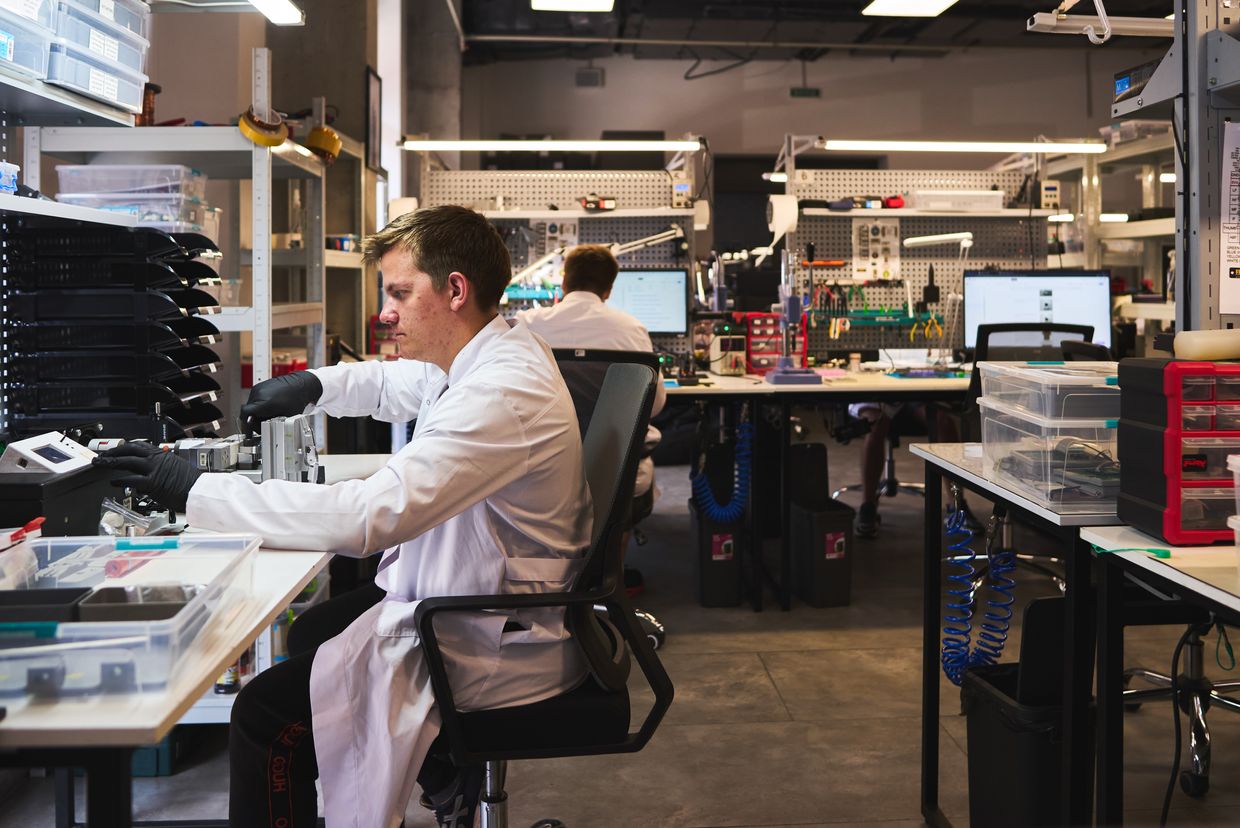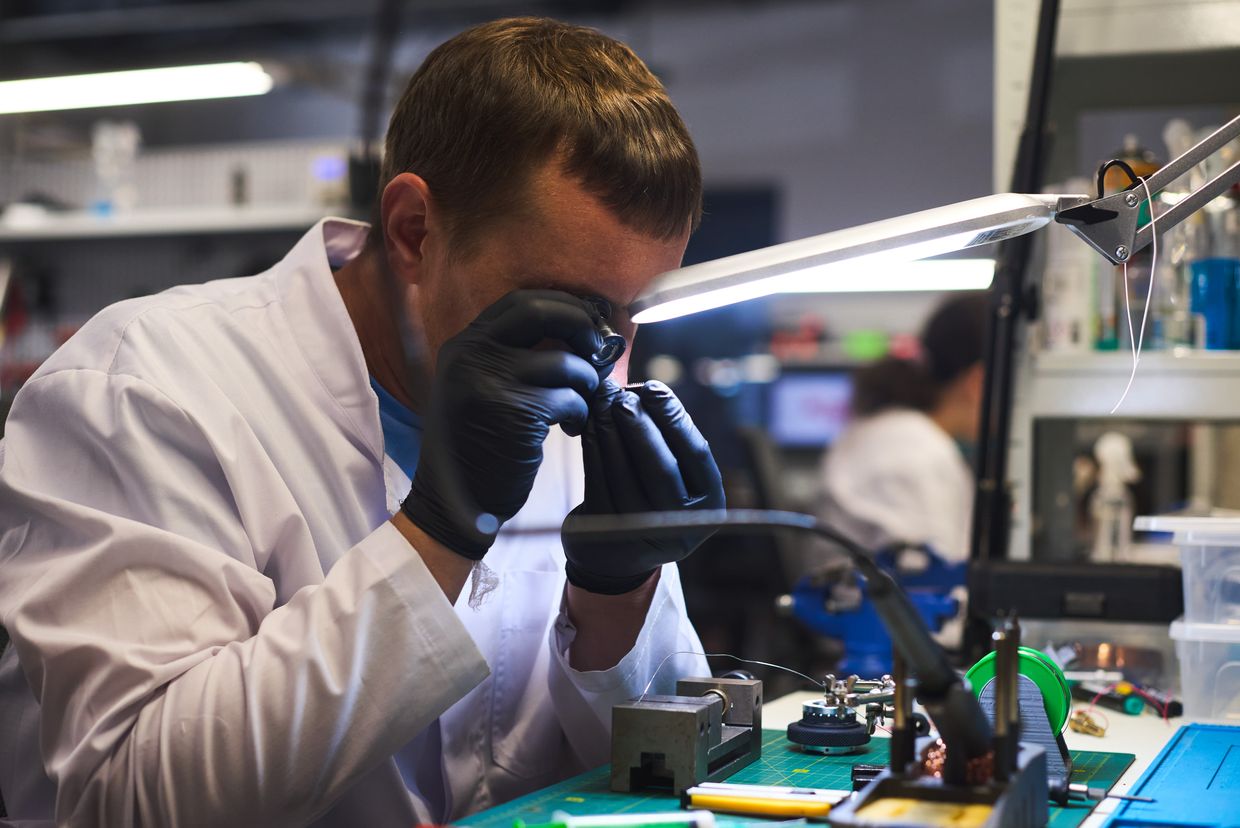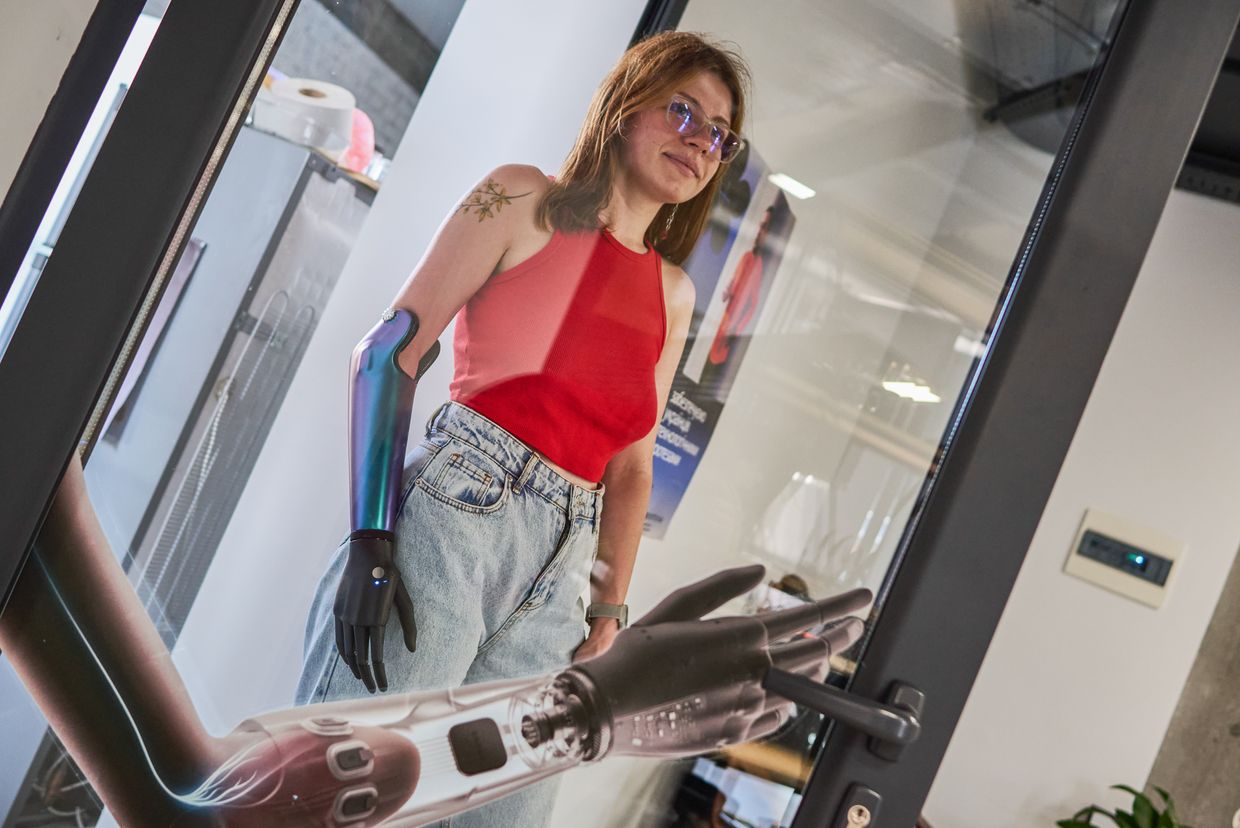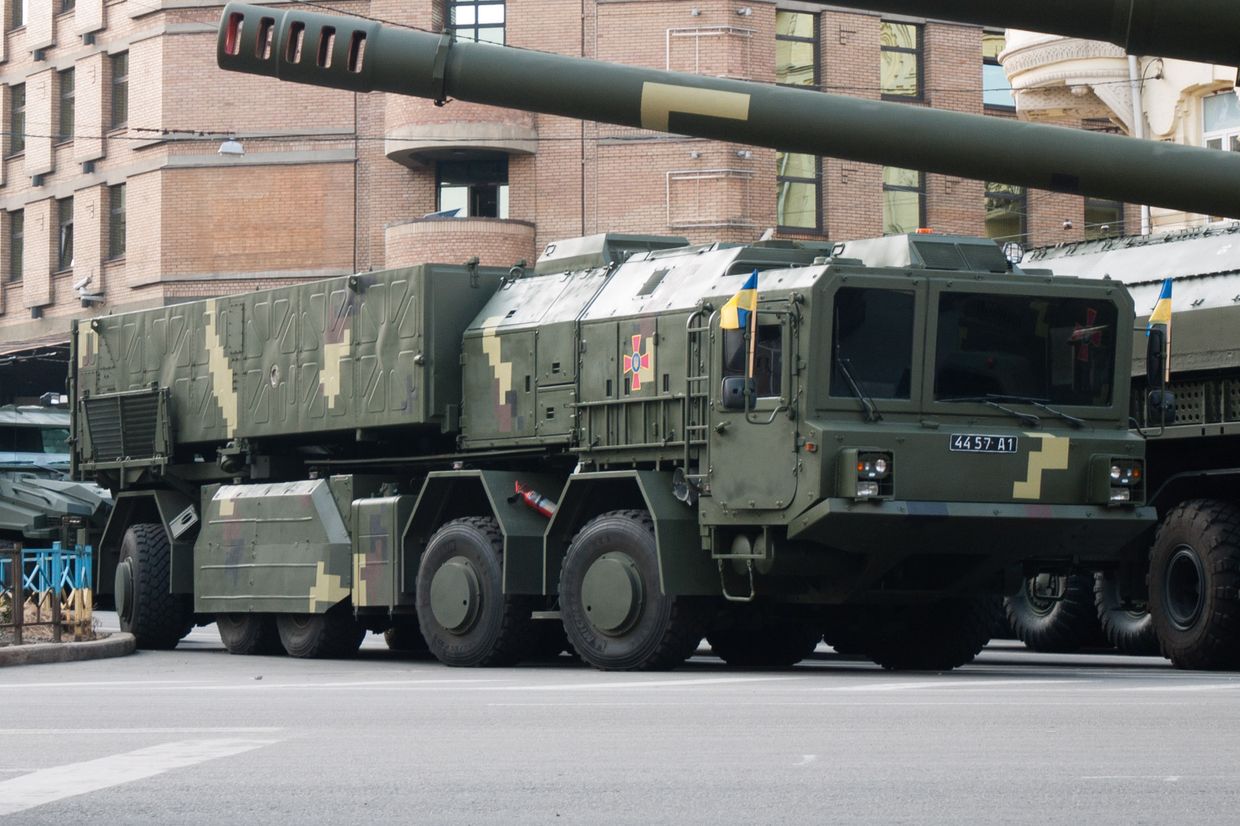Editor’s note: This article is part of a series of profiles highlighting successful Ukrainian startups and businesses. The series is funded by the regional investment fund Ukraine-Moldova American Enterprise Fund (UMAEF) and created in partnership with Spend With Ukraine, a non-profit organization that launched a platform to showcase businesses with Ukrainian roots and provide one more meaningful way to support Ukraine – by choosing to spend with Ukraine. The series’ sponsors are not involved in the editorial process of the writing of these profiles.
Outmanned and outgunned, Ukrainian soldiers in 2014-2015 held Donetsk Airport from attacking Russian-backed forces for more than 240 days before retreating from the destroyed structure. They became known in Ukraine as “cyborgs” for their apparent near super-human defense.
Ten years later, the myth has become reality.
Esper Bionics, a U.S.-Ukraine startup, produces a robotic prosthetic currently being used by over 30 Ukrainian soldiers serving in Russia’s war. Another 80 veterans in Ukraine have also received an Esper bionic arm.
“A lot of soldiers who receive our hand feel like cyborgs,” says Esper Bionics Chief-of-Marketing Dmytro Ganush.
“They want this cyberpunk feeling. They want to be like (a character in the movie) Ex Machina.”
One of the service people with an Esper hand is Borys Bass, who lost his arm in a mine explosion and is now a unit commander as fighting in combat would be difficult with a prosthetic.
Bass says that while the Esper hand is one of the best prosthetics available, the hand’s fingers and frame broke after a few rounds of military training and shooting.

“It's not designed for (military use), the hand has limitations of how much you can lift. If you try to shoot a machine gun with it, it's too much load,” he tells the Kyiv Independent.
“Plus I weigh about a hundred kilograms. When I get into a lying position to fire a machine gun it puts too much pressure on the hand.”
The company says it is constantly getting feedback from veterans and soldiers who use the Esper hand to improve its prosthesis to meet user requirements and as a result, started making the fingers in the hand out of metal, and thus more durable.
Esper Bionics never set out to provide bionic prosthetic hands that would help get soldiers back into combat, or even to focus on the Ukrainian market. When the company was founded in 2019, the team planned on being based partly in Ukraine, Europe, and the U.S., where it could concentrate on its largest potential market.
But Russia’s full-blown invasion in February 2022, which followed years of war in the eastern Donbas region sparked just after its occupation of Crimea in 2014, has left thousands of Ukrainians without limbs, changing the company’s priorities. Esper’s research and development, assembly, and production are all now entirely based in Ukraine, where it provides the lion’s share of its robotic hands.
“We wanted to open in the U.S. market because we didn't have this demand in Ukraine so we had few processes here, but now it's all of them,” Ganush said.
Ganush notes that Ukraine can’t really be called a market, as the company donates all the hands it produces to Ukrainians in need of prosthetics through its donor-funded program Esper for Ukraine.
The Esper bionic hand, which is attached to a socket that sits snugly around a user’s arm, is controlled by muscle contractions — as its user moves their muscles near the sensors attached to the socket, signals are sent to the hand to open or close the grip. A set of motors moves each finger in the hand individually.
A Bluetooth-connected application allows users to adjust the hand and grip settings depending on what’s most comfortable.
So far, Esper has produced over 200 bionic hands, with over one hundred going to Ukrainians injured by Russia’s invasion.
Ukrainian officials estimate that over 50,000 Ukrainians have lost limbs as a result of Russia’s aggression against the country. There are an estimated 50 million amputees and 140 million paralyzed individuals in the world.
Bringing AI to prosthetics
To serve even more people, the company just recently attracted $5 million in investments in a funding round to expand production of its hand, and introduce artificial intelligence (AI) into the bionic hand to make it more context-aware and better able to predict its user’s movements.
“Using AI gives us a lot of opportunity to have better control, to make the hand get used to its owner, and predict what the user wants to do in a particular situation.”
The idea behind Esper’s AI-powered future hand will be to create “an entire ecosystem” that can pass information from a series of sensors attached to its user to cloud-based software that constantly analyzes data to learn its users' habits.



Over time, this AI will allow the prosthetic to intuitively understand and predict repeated human motions, making the Esper hand increasingly adaptive and responsive, the company says.
Integrating AI into its bionic prosthetics is as much about creating the best product for its users as it is pushing the entire industry forward and spurring enthusiasm in it.
“We want to challenge a lot of things that are status quo in this industry. Artificial intelligence, machine learning, and data-driven systems aren’t the future anymore, they’re a reality, and people should use it,” Ganush says.
The bionic prosthetic industry is currently dominated by two large companies — Ossur and Ottobock. While they have a long history and large factories, innovation belongs to smaller and faster companies that have emerged over the past 10 years, Esper says.
Esper Bionics is one of the fastest growing in the industry, according to the company, having started in 2019 and becoming available on the market by 2023. Being in a market experiencing war in real time has given the company live feedback to improve its product.
Integrating people with prosthetics
The company's current hand has around 600 parts and 300 unique details, the vast majority of which are made in Ukraine and weigh around 500 grams — the weight of an actual hand. According to Ganush, it’s one of the lightest bionic hands on the market.
Olena Pozniakova, quality assurance engineer and Esper hand user herself says that getting used to the Esper hand didn’t take her more than a week, even though doctors told her that after 26 years without a prosthetic, it would be too difficult to train her arm to get accustomed to the bionic hand and that it would be better to opt for a classic prosthetic.
But she didn’t want a regular prosthetic “that would just be stuck on my arm.” She wanted “something functional, plus, it looks great,” Pozniakova boasts.
The hand’s robotic look is not just for functional purposes, but part of the company’s goal of avoiding the “uncanny valley.”
“(It’s) when you get this strange feeling when you see something that looks close to human, but something is off and you get this humanoid that’s kind of creepy,” Ganush added.
“It looks robotic because it actually is robotic — our users aren’t trying to hide this, just the opposite actually; this is a robotic hand, it looks cool, it’s the future.”
Ganush says creating something “cool” is also part of the company’s larger mission of changing the culture around people with prosthetics and limb differences so that they can better integrate into society.
Doing so involves making Esper a lifestyle brand, with modern and attractive branding and designs that ultimately seek to promote the idea that people with limb differences don’t have a medical issue but “a really interesting lifestyle” or, if anything, “a gadget just like any other," he says.
On the assembly floor of Esper Bionic’s Kyiv office and manufacturing plant, Asssembly Line Engineer Serhiy Prymak is carefully putting together the Esper hand’s fingers. Prymak came to work at Esper after visiting its office while helping a friend who had lost his arm in battle find a prosthetic.
He particularly likes to see when the fingers combine together and are placed in the frame that makes up the hand. And that he gets to make something that looks “cool and like it’s out of the Terminator movies.”
“I'm very proud that I am a part of this job. I was able to help not only my best friend but also many people in Ukraine and around the world."
Esper Bionics exemplifies Ukraine's innovative spirit with its cutting-edge prosthetics. To discover more businesses like theirs, visit Spend With Ukraine — by supporting Ukrainian goods and services, we strengthen the economy, and uplift resilient communities.




















